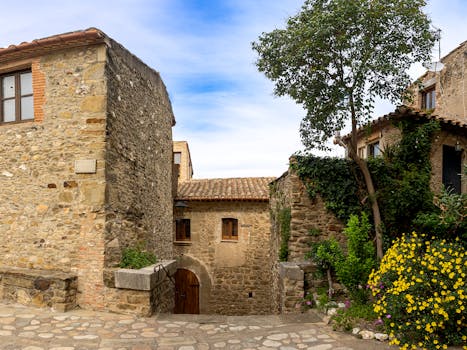
Traveling Through Time: How Europe’s Historical Heritage Shapes Modern Lifestyles in 2025
Traveling Through Time: How Europe’s Historical Heritage Shapes Modern Lifestyles in 2025. Europe, a continent steeped in history and tradition, has a unique ability to blend the old with the new. From the medieval streets of Italy to the modern skyscrapers of Germany, Europe’s cultural landscape is a rich tapestry of past and present. In this article, we’ll explore how Europe’s historical heritage continues to shape modern lifestyles in 2025.
The Architecture of Europe
One of the most striking aspects of Europe’s historical heritage is its architecture. From the grandeur of the Eiffel Tower to the simplicity of a traditional Spanish villa, Europe’s buildings are a testament to the continent’s rich cultural diversity. In 2025, many of these historical buildings continue to play an important role in modern lifestyles. For example, the ancient city of Rome is home to numerous historical landmarks, including the Colosseum and the Pantheon, which attract millions of tourists each year. These buildings not only provide a glimpse into Europe’s past but also serve as a reminder of the continent’s enduring cultural heritage.
The Art of Europe
Europe is also renowned for its incredible art, from the works of Leonardo da Vinci to the Impressionist masterpieces of Claude Monet. In 2025, many of Europe’s most famous art galleries and museums continue to showcase the continent’s rich artistic heritage. The Louvre in Paris, the Uffizi Gallery in Florence, and the Prado in Madrid are just a few examples of the many world-class museums that can be found in Europe. These institutions not only provide a platform for artists to showcase their work but also serve as a reminder of the continent’s enduring cultural significance.
The Cuisine of Europe
European cuisine is famous for its diversity and richness, with each country having its own unique culinary traditions. From the pasta dishes of Italy to the seafood of Spain, and from the beer of Germany to the wine of France, Europe’s cuisine is a true reflection of the continent’s cultural heritage. In 2025, many of these traditional dishes continue to be enjoyed by people all over the world. The rise of social media has also made it easier for people to share and discover new recipes, with many European chefs and food bloggers showcasing their favorite dishes online.
The Customs of Europe
Finally, Europe’s historical heritage is also reflected in its many customs and traditions. From the festive atmosphere of Christmas markets in Germany to the vibrant street performances of Italy, Europe is a continent that loves to celebrate. In 2025, many of these customs continue to play an important role in modern lifestyles. For example, the Tomatina festival in Spain, where participants throw tomatoes at each other, is a fun and quirky event that attracts thousands of visitors each year. These customs not only provide a glimpse into Europe’s past but also serve as a reminder of the continent’s enduring cultural significance.
Conclusion
In conclusion, Europe’s historical heritage continues to shape modern lifestyles in 2025. From architecture to art, and cuisine to customs, the continent’s cultural landscape is a rich tapestry of past and present. Whether you’re interested in history, culture, or simply exploring new places, Europe has something to offer everyone. So why not start planning your next trip to Europe today and discover the timeless charm of this incredible continent for yourself?





